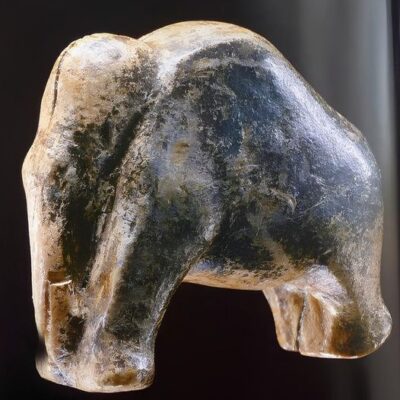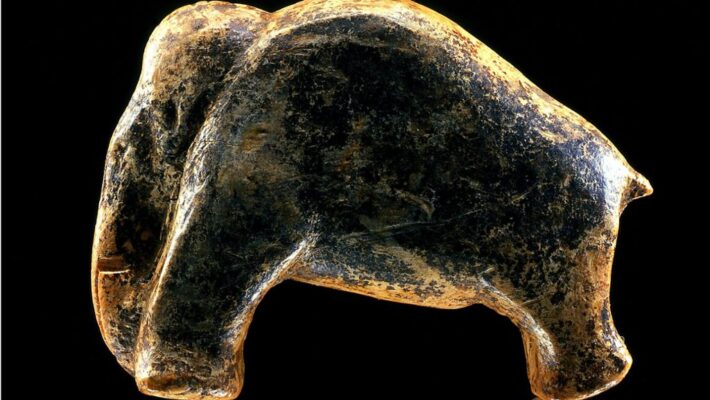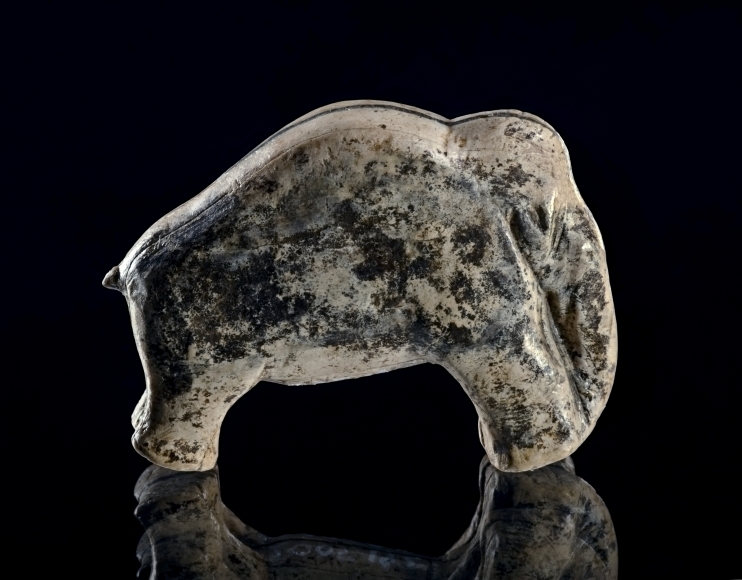The mammoth sculpture discovered in Vogelherd Cave, Germany, offers an incredible glimpse into the artistry of early humans. Dating back an impressive 35,000 years, this miniature ivory carving is one of the oldest known examples of prehistoric art, showcasing the advanced skills of early Homo sapiens. Below, we explore the significance of this discovery and its connection to early human culture.Let’s explore ancient civilization with archeology.dulichvn.net

Discovery and Origins of the Mammoth Sculpture
Unearthed in Vogelherd Cave, Germany
In 1931, archaeologists uncovered this tiny woolly mammoth sculpture in Vogelherd Cave, located in southwestern Germany. The cave, rich in prehistoric artifacts, provided insight into the artistic abilities of early humans who inhabited the region.
Radiocarbon Dating and Cultural Context
Radiocarbon dating has linked the sculpture to the Aurignacian culture, which is associated with some of the earliest modern humans in Europe. This culture, known for its advanced tools and artistic expressions, marks an important phase in human evolution.
Significance of the Mammoth in Prehistoric Art
The woolly mammoth held symbolic and practical significance for the people of the Aurignacian period. As a primary source of food, clothing, and tools, the mammoth was likely central to their way of life. Sculptures like this one may have had ritualistic or spiritual importance.

The Intricate Details of the Woolly Mammoth Figurine
Size and Weight of the Figurine
Measuring only 3.7 cm (1.5 inches) in length and weighing just 7.5 grams (0.26 ounces), the sculpture is a remarkable example of early craftsmanship. Its small size contrasts with the large scale of the animal it represents, highlighting the skill involved in its creation.
The Elegant Design of the Trunk and Legs
One of the most striking features of the woolly mammoth sculpture is its elegantly curved trunk, which demonstrates the artist’s attention to detail. The crosshatch pattern on the legs further showcases the sculptor’s intricate craftsmanship, giving life to the miniature figure.
Material and Techniques Used
The sculpture is carved from ivory, a material that was highly valued in prehistoric times. Its delicate details were achieved using tools available to early humans, possibly made from stone or bone, reflecting the ingenuity of the Aurignacian people.

The Importance of the Sculpture in Human History
A Symbol of Early Modern Human Creativity
This sculpture stands as a testament to the creative abilities of early modern humans. It highlights not only their technical skill but also their ability to convey meaning and symbolism through art. Such artifacts provide valuable insights into the cognitive and cultural developments of early human societies.
Insight Into Prehistoric Life and Beliefs
The woolly mammoth figurine offers a rare glimpse into the beliefs and everyday life of the Aurignacian people. It suggests that early humans had a deep connection with the animals around them, perhaps viewing them with reverence or as symbols of strength and survival.
A Milestone in the Evolution of Art
This tiny figurine is more than just a decorative object; it represents a significant milestone in the evolution of human art. As one of the earliest known ivory carvings, it sets the foundation for the artistic traditions that would later flourish in ancient civilizations.
See more: Explore Stonehenge Unexplained Mysteries
Conclusion
The 35,000-year-old woolly mammoth sculpture from Vogelherd Cave provides a fascinating glimpse into the world of early humans. Its intricate design and the context in which it was found continue to captivate archaeologists and historians, offering valuable insights into the creativity and culture of our ancient ancestors.


CÁC TIN KHÁC
Mark Twain & Olivia Langdon: A 36-Year Love Story Filled with Laughter and Devotion
The Tollund Man: A 2,400-Year-Old Mystery Preserved in a Danish Bog
Skara Brae: Scotland’s Hidden Neolithic Village
Porta Nigra: The Hidden Depths of Trier’s Iconic Roman Gate